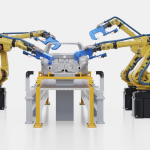As manufacturers look for new ways to improve efficiency and control costs, their sourcing decisions are also evolving. Rather than focusing only on getting the cheapest parts, companies are starting to prioritise components that make the final product perform better. ON Semiconductor’s approach using advanced materials that improve power efficiency shows how sourcing is becoming more connected to engineering decisions. Supply chain leaders will need to adjust their strategies to keep up.
From Component Price to Cross-Functional Cost Advantage
In the electric vehicle industry, ON Semiconductor has secured long-term partnerships with automakers not by supplying the cheapest parts, but by helping to lower the total cost of making a car. Its advanced technology improves energy efficiency by about 10%. This means automakers can reduce the size of the battery — one of the most expensive parts of an electric vehicle — without sacrificing performance. Even though these components cost more on their own, they help bring down the overall cost of the vehicle.
This kind of cost benefit can only be achieved when procurement, supply chain, engineering, and product teams work closely together. If battery and power system decisions are made separately, these opportunities are hard to identify and act on. But when teams can consider the bigger picture together, paying more for a component that reduces total system cost becomes a sound sourcing strategy.
This trend means that supply chain professionals increasingly need to look at costs beyond just the price of a single part. They have to consider things like energy savings, protecting profit margins, and how product performance can help a brand stand out — all of which are especially important for industries with expensive and complex products.
Supply Chain Design as a Strategic Asset
ON Semiconductor has built its supply chain around this way of thinking. By taking control of manufacturing key materials and the devices that use them, the company reduces its dependence on outside suppliers and gains more control over delivery timelines and quality.
This also strengthens its ability to respond to unexpected events. With manufacturing facilities spread across the U.S., Europe, Japan, Southeast Asia, and China, ON Semiconductor can help its customers adjust quickly to changes in trade rules or export controls. For carmakers shipping vehicles from China to the U.S. or Europe, this flexible fulfilment strategy can mean the difference between keeping a project on track or facing delays.
Supply chains that combine engineering knowledge, regional flexibility, and supplier control are not only more efficient — they are more competitive. But to make them work, businesses need to rethink how they measure, negotiate, and manage value.
Elevating Supply Chain Influence
It is no longer enough to look just at the landed cost — the total cost of getting a product to the factory gate. Businesses now need to find and clearly explain the hidden value of higher-performing components. That means investing in the right tools, data, and supplier partnerships to understand how a part affects the final product’s cost, time to market, and ability to cope with future risks.
It also means getting involved earlier in product development. When procurement teams only step in after product designs are finalised, they miss chances to avoid costs and add value. Advanced power technology is just one example, but the broader trend is clear: supply chain strategy is shifting to influence product design itself. Leaders who embrace this change will not only cut costs, but help define how their companies compete.




